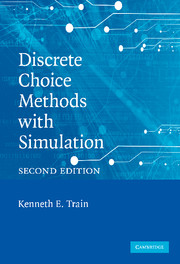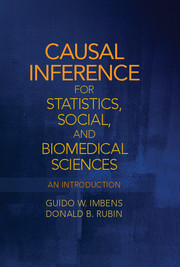Discrete Choice Methods with Simulation
This book describes the new generation of discrete choice methods, focusing on the many advances that are made possible by simulation. Researchers use these statistical methods to examine the choices that consumers, households, firms, and other agents make. Each of the major models is covered: logit, generalized extreme value, or GEV (including nested and cross-nested logits), probit, and mixed logit, plus a variety of specifications that build on these basics. Recent advances in Bayesian procedures are explored, including the use of the Metropolis-Hastings algorithm and its variant Gibbs sampling. This second edition adds chapters on endogeneity and expectation-maximization (EM) algorithms. No other book incorporates all these fields, which have arisen in the past 25 years. The procedures are applicable in many fields, including energy, transportation, environmental studies, health, labor, and marketing.
- Offers 2 highly anticipated new chapters on endogeneity and expectation-maximization (EM) algorithms
- Can be used across social science and science courses in decision-making by consumers, households, firms, and other economic agents
- Application sectors include energy transportation, environment, health, labor, and marketing
Product details
September 2009Adobe eBook Reader
9780511590634
0 pages
0kg
46 b/w illus. 17 tables
This ISBN is for an eBook version which is distributed on our behalf by a third party.
Table of Contents
- 1. Introduction
- Part I. Behavioral Models:
- 2. Properties
- 3. Logit
- 4. GEV
- 5. Probit
- 6. Mixed logit
- 7. Variations on a theme
- Part II. Estimation:
- 8. Numerical maximization
- 9. Drawing from densities
- 10. Simulation-assisted estimation
- 11. Individual-level parameters
- 12. Bayesian procedures
- 13. Endogeneity
- 14. EM algorithms.







